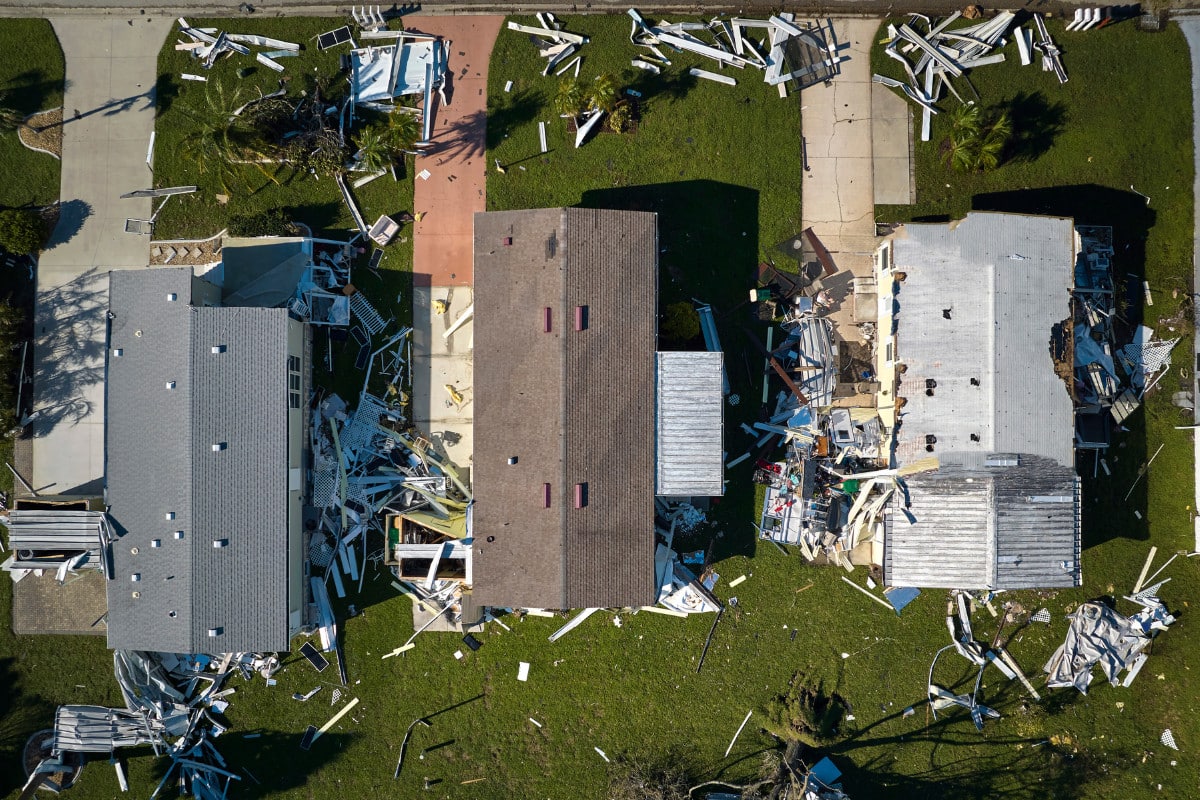The intricate dance between homeownership and the specter of natural disasters brings both anticipation and trepidation. The history of recent years’ relentless hurricane season on the east coast linger, fueling homeowners’ concerns about their properties’ vulnerability. Despite the fear, some coastal towns continue to rise in population, so more reason to learn how to protect yourself in the event of a storm.
The truth is, no place is truly immune to the capricious whims of natural calamities – be it a hurricane’s fury, an earthquake’s rumble, or a wildfire’s rage. In this all-encompassing guide, we will delve deep into the cosmetic aspects that homeowners often overly prioritize, urging you to look beyond the surface and focus on the critical preparatory measures and post-disaster actions.
1. The Right Coverage: Guarding Your Home
Natural disasters, by their very nature, defy prediction. Hence, the pivotal role of homeowners insurance comes into the spotlight – a safeguard for rebuilding your dwelling, replacing belongings, and aiding you during the period of displacement.
Calculating the precise amount of necessary coverage is an art. The formula is simple: right coverage = rebuild cost + possessions replacement + temporary living expenses. While standard policies encompass incidents like fire, lightning, hail, and explosions, keep in mind that regions prone to floods and earthquakes demand additional coverage – standard policies do not extend protection against these specific threats.
But don’t rely solely on the mortgage-based insurance limit; it might not cover the complete rebuilding cost. Delve into the factors:
- Local construction rates
- Dwelling’s square footage
- Exterior wall composition
- Architectural style
- Roof type and material
- Other structures (garages, sheds)
- Unique or historical attributes
- Value-boosting improvements
- Municipality’s rebuilding permits cost
For a ballpark estimate, multiply your home’s square footage by the local per-square-foot building cost. Seek advice from local real estate agents, builders associations, or insurance experts for accurate regional construction costs.
2. Flood Insurance: A Universal Need
Perceptions about flood insurance often hinge on the misbelief that it’s solely a concern for high-risk flood zones. This is a misconception that can have costly consequences. More than 25% of flood insurance claims arise from moderate-to-low-risk areas, proving that rainfall can trigger flooding irrespective of zone designations.
Understanding that “If it Rains, It Can Flood” is paramount. While flood insurance is obligatory for those mortgaging homes in high-risk flood zones, remember that everyone resides in a flood zone – the degree of risk is the variant. Even an inch of water can inflict around $25,000 in damages. The reliability of designated flood zones can be questionable, as many government-designated Flood Zones are outdated, dating back to the 1970s.
When acquiring a property, reckon with the flood risk, considering that FEMA’s mapping may fall short. Secure flood coverage even when not dictated by lenders. Unlike government aid, NFIP claim payments don’t necessitate reimbursement and can cover losses in non-declared disaster scenarios.
3. The Aftermath: The Cleanup Imperative
Natural disasters not only unleash havoc but also necessitate post-disaster cleanup that’s both vital and expensive. And in this aftermath, procrastination can prove costly, leading to code violations and hefty municipal citations.
Immediate after-storm citations are a reality in several regions. Post-Hurricane Irma, Miami-Dade County issued citations for hazards like downed fences, electrical vulnerabilities, and pool barriers, even before restoring power. Municipalities argue this is a safety measure, but not all agree. Addressing this, secure permits for repairs, as they are obligatory for electrical, mechanical, plumbing, fire protection, and construction work.
Beyond the repairs, permit costs can loom large, taxing homeowners further. Such financial burdens demand attention, as failure to secure proper permits could lead to substantial building code violation fines.
4. Long-term Implications: Selling After Disasters
The ramifications of a natural disaster go beyond immediate repairs and cleanup. Unresolved issues stemming from these events can affect property sales down the line.
Prior to closing, a comprehensive municipal lien search is prudent to unearth any lingering municipal code violations or unpaid permit fees, not revealed by title searches. Delaying addressing these issues can result in complications during the sales process. Tackle them promptly or risk hindering your closing timeline.
5. Mitigating Foreclosure Risks
The aftermath of natural disasters can trigger a surge in foreclosures due to missed payments. Forbearance, a temporary mortgage payment suspension, is an option in declared disaster areas. Careful consideration of forbearance terms is essential, as they vary across lenders.
Key Items to Remember When Requesting a Suspension of Your Mortgage:
- FHA, VA, Freddie Mac, and Fannie Mae offer tailored plans for designated disaster zones. Repayment options can be counterproductive – review terms cautiously.
- Track when the full amount becomes due and if interest accrues.
- Immediate contact with lenders is crucial if payments are unmanageable. For additional options, HUD’s National Servicing Center and FEMA can provide guidance.
In the realm of homeownership, readiness for natural disasters is non-negotiable. Striking a balance between cosmetics and structural resilience is paramount. By transcending the surface allure, you embrace the essence of preparedness – safeguarding not only your property but your peace of mind in the face of nature’s unpredictable forces.
It’s crucial to emphasize the importance of continuous preparedness. Natural calamities may be unpredictable, but the steps you take to fortify your home, secure the right insurance, and navigate the aftermath can make a significant difference. Beyond the immediate concerns, consider the long-term implications on property value and the potential for foreclosure.
By educating yourself on these aspects and staying proactive in your approach, you not only protect your investment but also contribute to building resilient communities. Homeownership is a journey filled with challenges, and facing the uncertainties of nature requires resilience and foresight.

